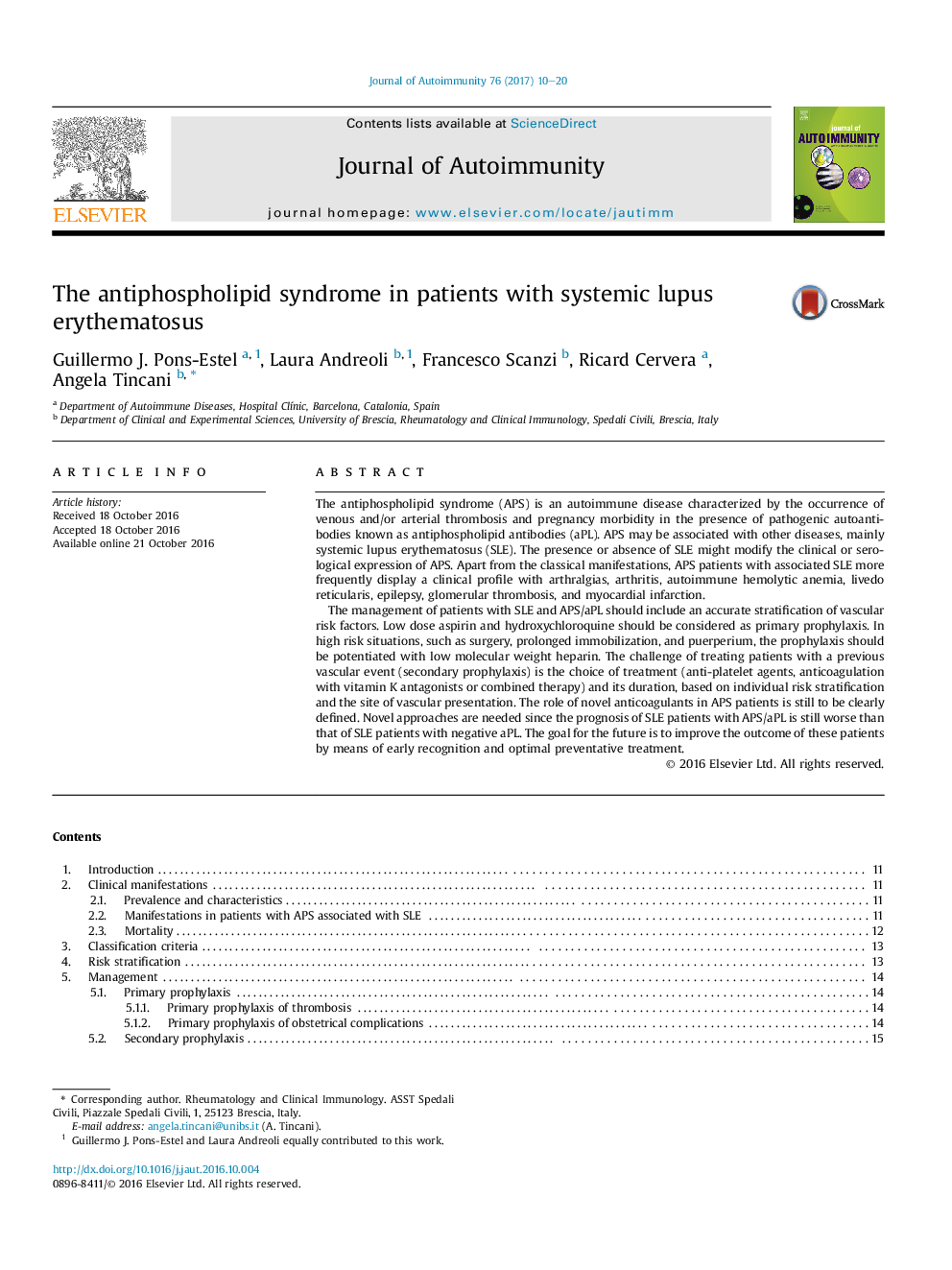| Article ID | Journal | Published Year | Pages | File Type |
|---|---|---|---|---|
| 5667929 | Journal of Autoimmunity | 2017 | 11 Pages |
â¢Antiphospholipid antibodies (aPL) are pathogenic autoantibodies found in at least 20-30% of patients with Systemic Lupus Erythematosus (SLE).â¢The presence of aPL aggravates the course of SLE in terms of irreversible organ damage accrual and reduced survival.â¢Management must include the prevention of the first vascular event (primary prophylaxis) or its recurrence (secondary prophylaxis).â¢A prompt treatment of active SLE, the minimization of modifiable risk factors, and a healthy lifestyle are essential measures.â¢Novel pharmacological approaches are under investigation for anti-thrombotic treatment and prevention in aPL positive SLE patients.
The antiphospholipid syndrome (APS) is an autoimmune disease characterized by the occurrence of venous and/or arterial thrombosis and pregnancy morbidity in the presence of pathogenic autoantibodies known as antiphospholipid antibodies (aPL). APS may be associated with other diseases, mainly systemic lupus erythematosus (SLE). The presence or absence of SLE might modify the clinical or serological expression of APS. Apart from the classical manifestations, APS patients with associated SLE more frequently display a clinical profile with arthralgias, arthritis, autoimmune hemolytic anemia, livedo reticularis, epilepsy, glomerular thrombosis, and myocardial infarction.The management of patients with SLE and APS/aPL should include an accurate stratification of vascular risk factors. Low dose aspirin and hydroxychloroquine should be considered as primary prophylaxis. In high risk situations, such as surgery, prolonged immobilization, and puerperium, the prophylaxis should be potentiated with low molecular weight heparin. The challenge of treating patients with a previous vascular event (secondary prophylaxis) is the choice of treatment (anti-platelet agents, anticoagulation with vitamin K antagonists or combined therapy) and its duration, based on individual risk stratification and the site of vascular presentation. The role of novel anticoagulants in APS patients is still to be clearly defined. Novel approaches are needed since the prognosis of SLE patients with APS/aPL is still worse than that of SLE patients with negative aPL. The goal for the future is to improve the outcome of these patients by means of early recognition and optimal preventative treatment.
